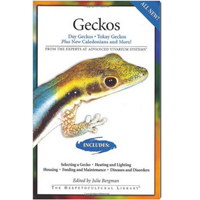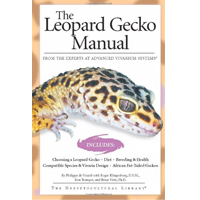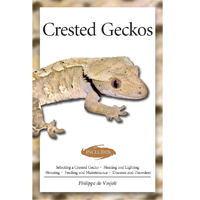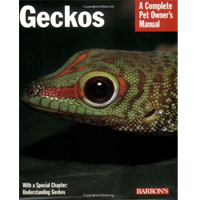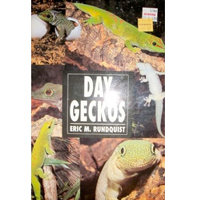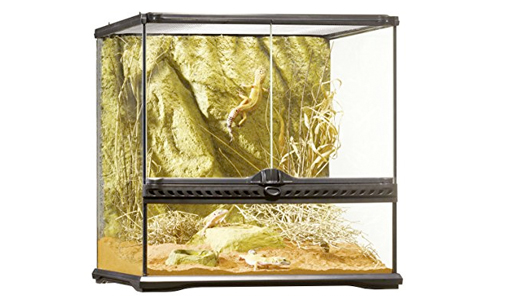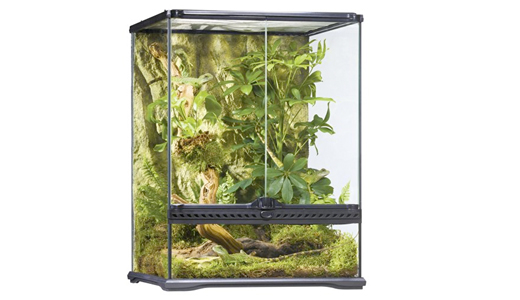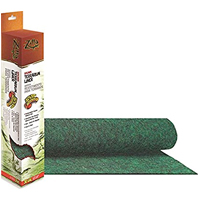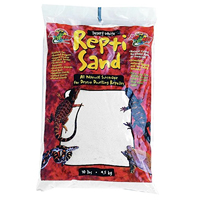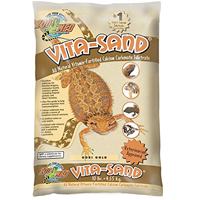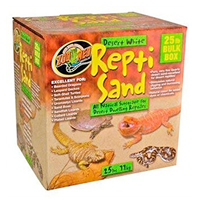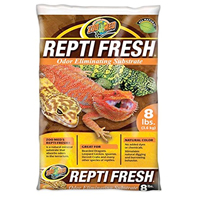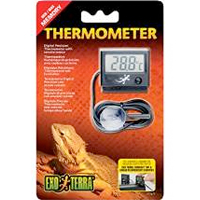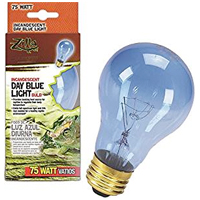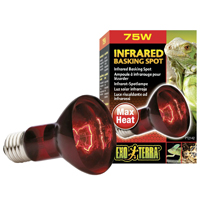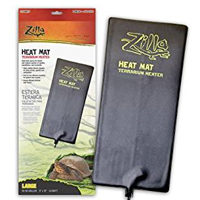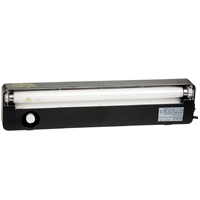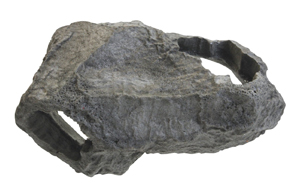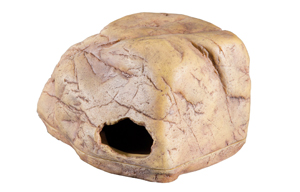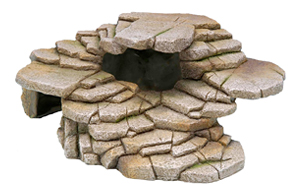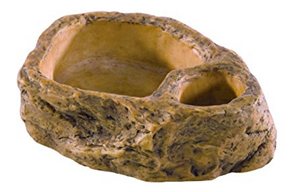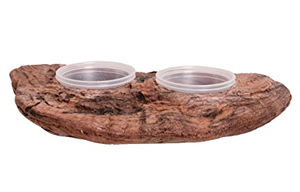Geckos are lizards usually found in desert and tropical environments all around the word. They usually (but not always) feature the lack of eyelids, a retiring demeanor, and expanded toe pads – which give them the ability to climb walls, cling to vertical rock faces, and hug tree trunks or branches.
Geckos come in a variety of shapes, sizes and colors. They’re interesting to observe and are ideally kept in small vivariums – making them the perfect pet for beginners (or those who are limited in space).
If you’re allergic to fur or feathers and can’t keep a dog, cat or bird, then a gecko might just make the perfect pet! Plus, geckos are known to live for more than a decade, so they make great long-term pets for both children and adults.
How To Build A Gecko Vivarium
A vivarium is the tank or habitat used to house a gecko, reptile or amphibian. While in some parts of the world (such as the United States) the term “terrarium” is more commonly used to describe such a container, either “vivarium” or “terrarium” is correct.
Building a gecko vivarium is easy, inexpensive and simple to maintain. Unlike caring for a pet dog or cat (which can be both expensive and time consuming), geckos are easy to care for and entertaining to observe in the habitat that you build for them.
In order to build the perfect gecko habitat, you are going to need:
- a small glass or glass/screen vivaria.
- one or more heating/lighting sources.
- a pre-cut “cage carpet” or fine-grain sand flooring.
- fake or living plants for the gecko to climb and hide among.
- one or two faux rock hides.
- a plastic, low-lying water dish.
- and a small food bowl.

While there are many different types of geckos, the crested gecko and the leopard gecko are probably the two most popular gecko types to kept as pets. This article, however, is about geckos in general and is not meant to be a how-to guide for any specific gecko type.
If you are planning to get a gecko and you’re a first-time pet owner, then the best gecko breed to consider is the leopard gecko. This type of gecko is the easiest to care for and the easiest to breed (if you wish to do so).
Gecko Care Manuals
Geckos make great pets because they require very little space, are easy to care for, live long lives (sometimes well into their teens), and are ideal for individuals as young as 8-years of age.
If you’re new to reptile keeping, then the leopard gecko is likely your best bet for a first-time pet. The leopard gecko is by far the easiest and most resilient animals in the reptile trade.
While crested geckos are the second-most popular type of gecko kept as a pet, their main drawback is that the crested gecko requires daily misting, which is a big commitment to many first-time pet owners – many of whom might prefer a more laid back approach to pet ownership.
![]() If you’ve already got some experience as a reptile or amphibian owner, then you might consider building a owning a giant day gecko, the Standing’s day gecko, a viper gecko or a gargoyle gecko.
If you’ve already got some experience as a reptile or amphibian owner, then you might consider building a owning a giant day gecko, the Standing’s day gecko, a viper gecko or a gargoyle gecko.
Whatever gecko type you decide upon, the books listed here will help you set up the ideal vivarium for your gecko, know how to care for your new pet, and understand the responsibilities associated with raising a gecko of any type.
The book I recommend most is Geckos: Day Geckos, Tokay Geckos Plus New Caledonians and More!
Types of Geckos
There are more than 1,650 species of geckos all around the world, but these are some of the more popular types of geckos that are kept in homes and as pets:

- The banded gecko lives in Central America, Mexico and the United States. It’s a nocturnal animal that is found in deserts and tropical forests, where it feeds on mostly crickets and meal-worms.
- The day gecko is a diurnal animal found mostly in the tropical environments of Madagascar and the surrounding islands. It is here that this unique gecko uses its sticky feed to feed on crickets and various types of fruit.
- The helmeted gecko is a gecko, that as you might expect, as a helmet-like shape to its head. The helmeted gecko is found throughout Africa and feeds on crickets and meal-worms.
- The leaf-tailed gecko is a ground-dwelling and tree-climbing nocturnal gecko from Madagascar that is mostly known for eating small crickets.
- The leopard gecko is a nocturnal animal found in the deserts of West India, Pakistan, Iraq, Iran and Afghanistan. Leopard geckos feed mostly on crickets and meal-worms.
- The Madagascan ground gecko is another sticky-toed animal found in tropical environments in Madagascan and the surrounding islands. This nocturnal, tree-climbing gecko eats mostly small crickets.
- The Namib desert gecko is a terrestrial gecko type found throughout Africa. They are a nocturnal animal that feeds on crickets and meal-worms.
- The New Caledonian gecko is, as you might have guessed, found only in New Caledonia (a large island in the Coral Sea between Australia, New Zealand and Papua New Guinea). The New Caledonian gecko is a nocturnal animal that lives in tropical environments and is best fed on crickets and fruit purees.
- The tiger gecko dwells in African countries and likes to spend most of its time living on the ground. This unique African gecko likes to eat crickets and meal-worms.
- The tokay gecko is an arboreal gecko species that lives in tropical environments in southern Asia that feeds mostly on crickets and fruit.
- The viper gecko is an amazing little nocturnal, land-dwelling creature found in Northern India and Pakistan. When the viper comes out to feed at night, its favorite meal is crickets.
- The web-footed gecko is not an arboreal animal, as you might expect, but is a terrestrial gecko found throughout the African continent. Like so many other African geckos, the web-footed gecko spends most of its life eating crickets and meal-worms.
- The wonder gecko is another nocturnal gecko species that is found in China and parts of the middle east. It’s favorite food is crickets and meal-worms.
How Much Space Does A Gecko Need?
Building a good home for your gecko is the first step to ensuring that your new pet lives a long and happy life.
The size and type of vivarium you will need for your pet gecko is going to depend on the type of gecko you choose to keep. Generally, however, most terrestrial (ground-dwelling) geckos will need to be kept in horizontal vivariums, whereas arboreal (tree-climbing) geckos should be kept in vertical vivariums.
Most geckos measure between 4 and 7 inches in length (10-18 cm). Other geckos, like the New Caledonia gecko, the Standing’s Day gecko, the Giant Day gecko and the Tokay gecko can all measure around 12 inches or longer.
In most instances, you want to avoid very large gecko vivariums and instead, opt for something much smaller. 50 gallon vivariums, for example, are usually too large for most gecko pets, because they require the animal to move too far in search of food.
Instead, a vivarium (like this) that measures approximately 5-20 gallons in size is ideal for the average pet gecko species.
What Type of Gecko Vivarium Is Best?
The best type of vivarium for a gecko is one made entirely of glass, or one made of a combination of glass and screen.
Glass vivariums are preferred in most instances because they are affordable, easy to clean and they retain the humidity necessary for proper gecko ownership. Although, a glass vivarium with a screen top is a very good option, as the screen top allows for easy access to both the gecko and its habitat (which is necessary for cleaning and maintaining the animal’s vivarium). Plastic and plexiglass gecko vivariums can also be found both online and in many local pet stores. While glass is preferred to these cheaper materials, plastic and plexiglass vivariums can be used for the keeping of a pet gecko.
Once again, it’s very important to understand that terrestrial geckos require horizontal vivariums, while arboreal geckos should be houses in vivariums that stand up vertically.
Gecko Flooring & Substrate
After purchasing the glass or plastic vivarium for your gecko, the next thing to consider is the flooring, litter or substrate that you wish to use. Which material you ultimately use will depend on the type of gecko that you have chosen to keep.
While it might be tempting to use wood chips, wood shavings, gravel or construction sand on the floor of your gecko vivarium, most geckos are best kept on a pre-cut “cage carpet” or on a fine-grain sand (which is usually red, brown or white in color and similar to the type of sand geckos might be found living on in Africa and in other parts of the world).
![]() If you own a leopard gecko, it’s extremely important that you not use a course-grain sand on the flooring of your vivarium, as leopard geckos have a tendency to digest the sand, which then blocks up their intestinal track and kills them – a process known as “impaction.”
If you own a leopard gecko, it’s extremely important that you not use a course-grain sand on the flooring of your vivarium, as leopard geckos have a tendency to digest the sand, which then blocks up their intestinal track and kills them – a process known as “impaction.”
If you’re on a budget and can’t afford a simple “cage-carpet” or the fine-grain sand that most geckos enjoy, then paper towels and newspaper can also be used.
Lighting, Heating & Humidity For Geckos
All geckos are cold-blooded, which means that they can’t self-regulate their body temperatures and must rely on the warmth found in their surroundings to metabolize food, perform mating rituals and carry out the process of eating and digesting food.
Geckos achieve the right body temperature by thermoregulating – or by moving their body into a warm spot and then moving to a cooler spot once they become too warm. This is why it’s important that your gecko vivarium have at least one source of heat and a cooler area where the animal can retreat to once it reaches its ideal body temperature.
![]() This is also why we recommend that you have at least two thermometers in your gecko vivarium or terrarium, so you can keep a steady eye on the temperatures inside your gecko’s home.
This is also why we recommend that you have at least two thermometers in your gecko vivarium or terrarium, so you can keep a steady eye on the temperatures inside your gecko’s home.
Terrestrial geckos usually have a vivarium that is heated with an incandescent light, which can be a regular household light-bulb or a special reptile bulb like the one you see here.
Nocturnal geckos, on the other hands, are best kept warm with the use of an infrared lamp.
Gecko vivariums can also be heated using under-tank heaters, which are think plastic pads that contain electrical heaters. In many cases, gecko vivaria are heated with a combination of incandescent lights and under-tank heaters (one light above the terrarium and one under-tank heater below).
Arboreal geckos have sensitive, sticky feet and under-tank heaters can burn their feet, so fluorescent or full-spectrum lighting is preferred for these animals.
Plants, Hide Boxes & Branches
When you’re setting up your vivarium, keep in mind that a gecko vivarium should be decorated in much the same way you would decorate your own house. You need to make sure that the vivarium has places for your gecko to both sit, sleep and hide (relax).
Plants are a must for any good gecko vivarium:
- Bamboo – Most geckos love bamboo. The bamboo stalks should be a little big bigger than the body of the gecko so that they have something to climb onto and hide behind.
- Bromeliads – tropical, exotic plants that look great in a larger gecko vivariums.
- Chinese evergreens – are great plants to have in large gecko vivariums.
- Crotons – colorful tropical plants that most geckos love.
- Draceana – the broad leaves of these plants provide excellent cover for resting geckos.
- Orchids – geckos love orchids (and they look good too), but orchids can be difficult to care for if you don’t life in the right environment and don’t know what you’re doing.
- Philodendrons – These are the ideal plant for small geckos who are looking for leaves to both sit on and hide under.
- Sansevieria – These tall snake or vine-like plants are resistant to heat and provide great hiding places and egg-laying repositories for your pet gecko.
Fake plants are always an option as well. Even though fake plants don’t look as good as real live plants in a gecko vivarium, they are certainly a lot easier to maintain. With the use of fake plants, you don’t have to worry about killing both the gecko and the plants. Now you can just focus on keeping your gecko happy and healthy.
![]() In addition to the plants you add to your gecko vivarium, you also need to know that terrestrial geckos (those that live on the ground) need to have some kind of rock or cave to hide in. This helps to make your gecko feel safe and happy, which ultimately leads to a healthier and longer-living gecko.
In addition to the plants you add to your gecko vivarium, you also need to know that terrestrial geckos (those that live on the ground) need to have some kind of rock or cave to hide in. This helps to make your gecko feel safe and happy, which ultimately leads to a healthier and longer-living gecko.
Plastic hide boxes are best used inside gecko vivariums because they lack the porous and pokey material found on wooden hide boxes and they are easier to clean.
While actual rocks can be used as a hide for your gecko, it is important that the rocks be glued or welded together in some way to prevent the rocks from falling on a crushing your gecko.
Ground-dwelling geckos also like driftwood and cholla cactus to walk on and cork bark to hide under. Cork bark is especially good for the inside of a gecko vivarium because it allows the geckos to absorb heat, while blocking out the bright light.
If you really want to make your gecko happy, place one hiding spot near the warm side of your vivarium and another hiding spot in the cool end. This will provide your gecko with a number of different places to hide in the shade, bask in the heat, or climb on to seek food and perform mating rituals.
What Do Geckos Eat & Drink?
Most gecko species are easily fed on crickets, meal-worms or a fruit juice puree. The vast majority of geckos, however, are happy with crickets alone as their main source of food.
Other sources of food for geckos include: Cockroaches, flightless fruit flies, freeze-dried insects, giant meal-worms, super-worms and wax worms.
The average adult gecko will need to be fed about 3-4 times per week. When you purchase or obtain your gecko, make sure to ask its previous owner when and how often it is feeding. The more closely you can remain to its regular feeding pattern, the more easily your gecko will transition into its new home.
Crickets can be obtained online or from your local pet food store and can even be bred, with some experience, in your home.
![]() As for water, each gecko is different. Some geckos will need a water dish, while others will require that their vivarium is regularly misted. The animal then licks or collects the moisture it needs from the plants, substrate and air.
As for water, each gecko is different. Some geckos will need a water dish, while others will require that their vivarium is regularly misted. The animal then licks or collects the moisture it needs from the plants, substrate and air.
When choosing a water dish for your gecko, you want to choose a low-lying faux-rock watering dish that is easy for your gecko to see into and collect water from. Your dish should be small, but not so small that the water will evaporate in just a couple days.
It’s extremely important that your gecko’s water dish be clean at all times. Monitor it regularly and clean it of any dead crickets, substrate debris or feces that may fall into it.
In addition to a water dish, you also need to have a small food dish or serving tray in your gecko vivarium. This small dish won’t necessarily hold back the live crickets you place within your vivarium at feeding time, but it will come in handy for dispensing calcium and other vital supplements to your gecko.
Fun Facts About Geckos

- The leopard gecko and its relatives (family Eublepharidae) can close its eyes to blink and sleep, whereas most other gecko species (family Gekkonidae) do not have eyelids and, as a result, they’re eyes are always open.
- Nocturnal (night-dwelling) geckos have eyes pupils that look like long slits (similar to a cat) that can dilate large at night to allow as much light into the eye as possible. Diurnal (day-active) geckos, on the otherhand, have round pupils (similar to human beings) which work to center light better in the center of the eye, which is more beneficial for daytime activities, such as seeking out food, feeding and hiding from predators.
- The coloration found on most geckos allows them to blend in with their surroundings and camouflage themselves from their predators. Desert geckos, for example, tend to be yellow and brown, allowing them to blend in with sand and pebbles. Tree-dwelling geckos are often times a shade of brown that allows them to blend in with the bark and branches found on tropical trees. And diurnal tropical geckos are usually a shade of green, allowing them to look like green leaves.
- It is unknown as to whether or not geckos can see in color, but it is believed that diurnal (day-time active) geckos can see in color and use that information to effectively camouflage themselves from their predators, perform mating rituals, and even to prevent inter-species mating.
- Most geckos are covered in hundreds of tiny scales. Some geckos have large noticeable scales (similar to a snake), where as other geckos have scales so small that they can hardly be seen with the human eye.
- Some geckos have such delicate skin/scales that they can not be handled without causing damage to their bodies. This is just part of the reason why leopard geckos and crested geckos are two of the most popular gecko types – because they can handle the abuse that comes with delicate human contact.
- Geckos, like snakes, will shed their skin as they grown. The shedding process begins early and will occur repeatedly as the animal grows into adulthood. When a gecko sheds its skin, it will appear a soft milky white color and even the skin surrounding the eye will be shed during this process (with many geckos species). Most geckos eat their shed skin immediately after it has been shed, but not all geckos do this.
- Most geckos lay at least one or more clutches of eggs (containing at least two or more eggs per clutch) during the breeding season. The eggs can be either hard-shelled (like a bird) or soft and leathery (like you might expect with a frog or turtle).
- The New Zealand gecko is one of the rare gecko breeds that does not lay eggs, but gives birth to live baby geckos.
- Geckos have the ability (known as autonomy) to voluntarily drop or cut off their tail. This is a defense mechanism that is built into the animal. While all geckos possess this ability, not all geckos are able to grow their tails back. The tail of the leopard gecko, for example, will grow back over time, but the tail on a crested gecko will not. Even if a gecko can regenerate its tail, the new tail (made of cartilage instead of bone) rarely has the color or shape of the original.
- Geckos have good hearing and their ears (the large open notches on the sides of their heads) can be seen easily on most gecko species.
- Most geckos use their long, notched tongues to clean their eyelids of dirt and debris.
- Geckos tend to display their brightest, most interesting colors during their period of activity. For a nocturnal gecko, that would mean at night. Whereas a diurnal gecko is most likely to display his or her colors during the daytime. It should be noted, however, that a nocturnal gecko is not 100% active only at night and sleeping during the day. In just the same way that a diurnal gecko is not 100% active during the day and sleeping or inactive at night. Both gecko types will tend to be most active during their natural body cycles (nocturnal or diurnal), but almost all geckos will be active at other times throughout the day as well – especially if they are hungry or feel threatened.
- If threatened, a geckos first move will be to run away and hide. If that doesn’t work, geckos may stand their ground and hiss or jump. Some gecko species will even bite! And yes, geckos do have teeth.
- If a gecko is constantly stressed out (by its environment or another animal/gecko in its cage), the gecko will typically turn dark in color and stop eating, ultimately causing it to die. You can usually tell if you gecko is sick by watching out for these indicators, as a healthy gecko is usually bright and full of color.
Photos by: Ozzy Delaney, kuhnmi, Photo Tobi, David Torcivia, Holley and Chris Melton, Jessi Swick, Ewen Roberts, Axel Rouvin, Alias 0591, Jessi Swick, Paul Albertella and _paVan_.

